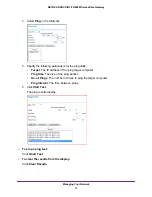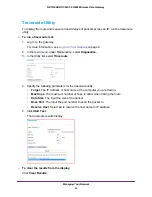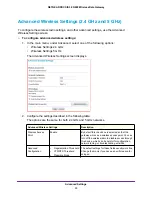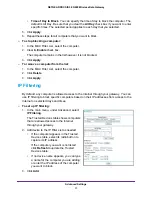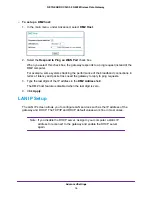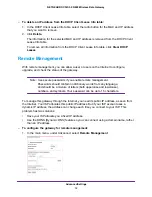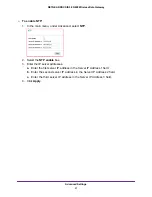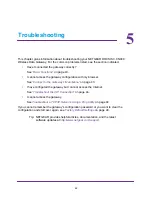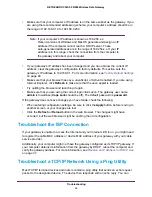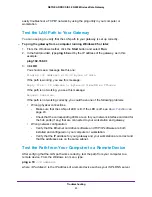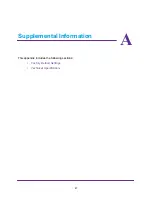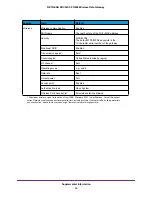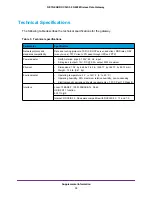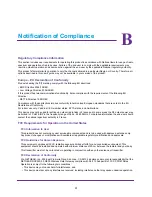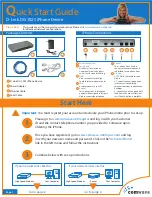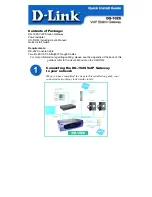
Advanced Settings
39
NETGEAR DOCSIS 3.0 N900 Wireless Data Gateway
2.
Select the
Allow Remote Management
check box.
3.
Enter a name in the
Remote User Name field.
To manage the gateway, use this name from the remote computer.
4.
Enter a password in the Remote Password
field.
To access the gateway, use this password from the remote computer.
5.
To access the gateway remotely in your browser when you connect, specify the port
number. To determine the port number:
a.
From a remote location, start a browser.
b.
In the Address or Location field, enter the Internet IP address of this gateway (not
the LAN IP address), followed by a colon and the port number, as follows:
http://
ip_address:pn
|| https://
ip_address:pn
where:
ip_address
is the Internet IP address of this gateway.
pn
is the port number assigned on this screen.
6.
Enter the password for the gateway.
7.
Specify the permitted IP addresses for remote management.
a.
To allow remote management from any originating IP address, select the
ALL IP
Addresses
check box.
NETGEAR strongly recommends not using this option unless it is required.
b.
From the Address Type list, select either
Single Address
or
Address Range
.
c.
Enter the permitted IP addresses.
You can enter a single IP address or up to 16 IP addresses ranges. Each range
begins with a start IP address and finishes with an end IP address in the format of
start IP - end IP.
8.
Click
Apply
.
Configure Universal Plug and Play (UPnP)
Universal Plug and Play (UPnP) helps devices, such as Internet appliances and computers,
access the network and connect to other devices as needed. UPnP devices can
automatically discover the services from other registered UPnP devices on the network. With
UPnP, you can specify the following:
•
Advertisement period
. Specifies how often the gateway broadcasts its UPnP
information. The default is 30 minutes. Lower numbers ensure that control points
have current device status at the expense of more network traffic. Larger numbers
compromise the freshness of the device status but can significantly reduce network
traffic.

